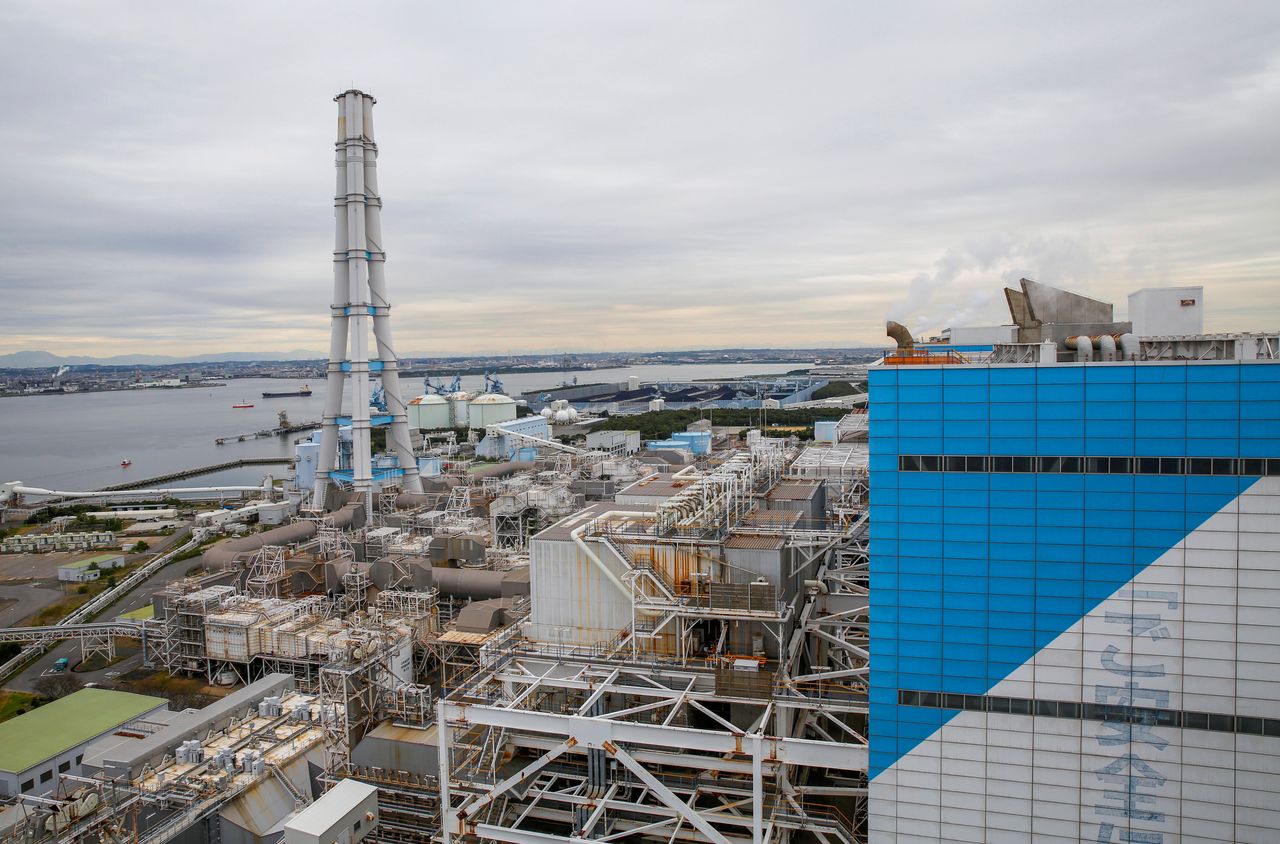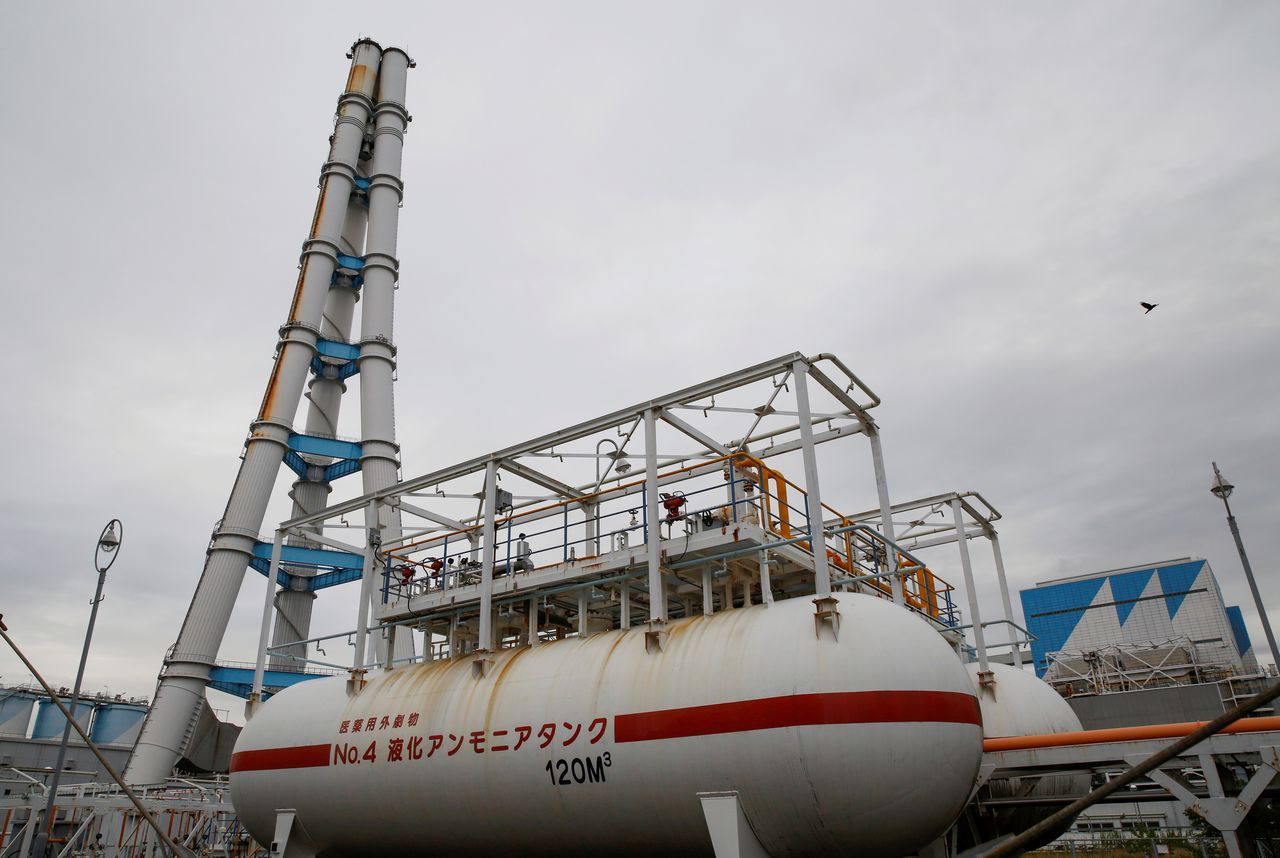Hooked on coal for power, Japan aims for ammonia fix
Newsfrom Japan
- English
- 日本語
- 简体字
- 繁體字
- Français
- Español
- العربية
- Русский
By Yuka Obayashi
HEKINAN, Japan (Reuters) -Japan is stepping up efforts to extend the lifespan of its coal-fired power plants in an ambitious project to add low-carbon ammonia to its fuel mix, targeting both stable energy supply and lower carbon dioxide (CO2) emissions in one stroke.
The world's fifth-biggest CO2 emitter's push to use ammonia as a fuel reflects its 2050 goal to become carbon neutral and comes to alleviate pressure from Britain and other countries to phase out dirty coal at the COP26 global climate conference https://www.reuters.com/business/cop, starting in Glasgow on Sunday.
Tokyo has pledged to achieve net zero emissions status by 2050, but reliance on coal and gas as fuels for power has grown since Japan suffered the 2011 Fukushima disaster, which effectively left its nuclear power industry in crisis.
Use of ammonia - principally used as a raw material for fertiliser and chemicals - faces significant technical and costs challenges, and likely won't placate campaigners calling for a COP26 commitment to consign use of coal to history https://www.reuters.com/business/energy/cop26-aims-banish-coal-asia-is-building-hundreds-power-plants-burn-it-2021-10-29.
But Japan has high hopes that it can pioneer a new way of reducing CO2 emissions at coal-fired power plants that could be adopted in other countries.
Earlier in October, the country's biggest power generator, JERA, began using a small amount of ammonia in a demonstration at its 4.1 gigawatt (GW) Hekinan power station in Aichi, central Japan, home to Toyota Motor Corp. Now 30 years old, Hekinan is the country's biggest coal-fired power plant.
Ammonia is mainly made from hydrogen produced from natural gas and nitrogen from the air. It does not emit CO2 when burned, but its production releases emissions if it is made with fossil fuel.
The project at Hekinan is aimed at achieving use of 20% ammonia at a 1 GW unit for about two months, using 30,000-40,000 tonnes of ammonia, by March 2025. If successful, it will be the world's first trial in a large commercial plant, and Japan hopes to use ammonia to gradually replace coal and develop a fully ammonia-fired power plant by 2050.
"For Japan, fuel ammonia is a way of fully utilising coal power plants by turning them zero-emission power by 2050," said Takeo Kikkawa, vice president of International University of Japan.
The advantage of ammonia is that power companies can use existing plants without major modifications and technology for production, transport and storage are already established. At the Hekinan demonstration, except for replacing 48 burners and installing a tank and pipelines, equipment will be kept unchanged.
Also, utilities are familiar with handling the toxic substance with a pungent odour that can damage the respiratory system if inhaled as they use it as a catalyst in denitration systems.
Japan is targeting growing its fuel ammonia demand to 3 million tonnes a year by 2030 from zero now. JERA's goals are lofty: it aims to use a 20% ammonia fuel mix at all its coal-fired power plants by 2035, and to develop technology to use 100% ammonia in 2040s.
"But it's important this initiative won't delay other decarbonisation measures such as phasing out inefficient coal power," said Yukari Takamura, professor at the University of Tokyo.
"Japan also needs to clearly explain to the world that this will be used during energy transition, or as a technology for the last mile that cannot be replaced by renewable."
MANY CHALLENGES
While success in adapting power plants to using ammonia would be a breakthrough, even if not enough to satisfy anti-coal campaigners, significant challenges remains - costs, adequate supply of ammonia and technology to control nitrogen oxide (NOx) emissions.
The industry ministry in February said power generation costs with 20% ammonia in the mix are 12.9 yen per kilowatt hour(kWh), fully 24% above the cost with 100% coal.
At Hekinan, power station manager Katsuya Tanigawa said, "If ammonia becomes a mainstream fuel, the price will fall due to competition among suppliers."
Questions also remain over supply.
Using 20% ammonia at a 1 GW power plant throughout a year requires 500,000 tonnes of the fuel. Doing it at all coal power plants at major Japanese utilities would require 20 million tonnes of ammonia, equivalent to 10% of global production, the industry ministry says.
To make a larger supply chain, Japanese firms are already collaborating with companies in Saudi Arabia, Australia, Norway and Asia, while promoting use of ammonia in other sectors and other countries.
Another key issue is controlling NOx emissions that could themselves contribute to global warming.
"Adjusting the combustion method is one way, as slow combustion can reduce NOx," Tanigawa said.
"This project will be a touchstone for zero-emission thermal power ... we want to lead this to a success despite many challenges."
(Reporting by Yuka Obayashi; Editing by Kenneth Maxwell)

FILE PHOTO: General view shows JERA's Hekinan thermal power station in Hekinan, central Japan October 18, 2021. REUTERS/Yuka Obayashi

FILE PHOTO: General view shows an ammonia tank in the foreground at JERA's Hekinan thermal power station in Hekinan, central Japan October 18, 2021. REUTERS/Yuka Obayashi
(c) Copyright Thomson Reuters 2021. Click For Restrictions -
https://agency.reuters.com/en/copyright.html
Reuters Japan United Nations Asia Australia Europe Norway Middle East Saudi Arabia